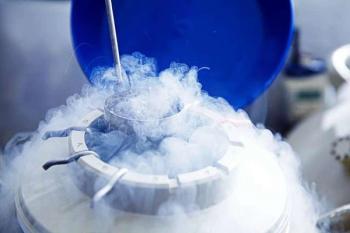
Osteoporosis
Osteoporosis is a disease that is caused by significant bone loss, which leaves the bones weak and at an increased risk for fracture. It is diagnosed clinically when a patient has a history of certain types of fractures, or by the use of special X-ray studies such as a DEXA scan.
Throughout life, your bones are in a constant state of both formation and resorption, a process that is referred to as "remodeling". Until your early 30’s the formation process occurs faster than the resorption, but after that there is a gradual loss of bone strength in both men and women. This bone loss is especially accelerated in women after the menopause due to the loss of estrogen.
At menopause, bone loss can occur at an average rate of 3% per year for the first 5 years and then 1% per year from then on. Since a woman will spend up to one-third of her life in the post-menopausal state, it becomes obvious that the potential for bone loss is significant. This bone loss can predispose to fractures, especially of the hips, wrists, vertebrae (back bones), and the upper arms. A hip fracture in a post-menopausal woman is a potentially serious condition. Overall, 30% of these women will die within the first year after the fracture, and of the survivors serious permanent handicaps can remain.
This is why it is imperative that women be aware of the several effective preventative therapies that exist. Prevention begins early in life, and teenagers should be taught the importance of exercise, and of diets rich in calcium; which is contained in yogurt, cheese, milk, nuts, and green leafy vegetables. Interestingly, women who used birth control pills earlier in life tend to have stronger bones than women who did not, and this is most likely due to the estrogen content of the pills.
This leads us to the cornerstone of treatment for osteoporosis which is hormone replacement
Women need about 1,200 milligrams of calcium daily up until their mid-20’s. After that 1000 milligrams per day is needed. For post-menopausal women not on estrogen therapy, the recommended daily intake is 1,500 milligrams. Much of this can be obtained from a healthy diet, but some women may require dietary supplements. Adequate Vitamin D can also be obtained through proper diet, and your body can actually make a sufficient quantity of Vitamin D through as little as 15 minutes of sun exposure per day.
In summary, if women can remember these preventative measures which protect against bone loss, than significant strides will be made towards decreasing the prevalence of this disease. Please discuss these measures with your physician.
References:
Bibliography
1. Treatment of the Postmenopausal Woman, R.A. Lobo, 1994, Raven Press, New York, New York.
2. ACOG Educational Bulletin #247, Hormone Replacement Therapy, May 1998.
3. Women Are Never Too Old or Too Young to Protect Against Bone Loss, Vicki L. Seltzer, Woman’s Health, May 12, 1997.
4. Improving Compliance with Estrogen Therapy for Osteoporosis, Stephen M. Setter, The Female Patient, Vol. 23, April 1998, pp.51-62.
5. Combating Osteoporosis, A discussion of 5 cases, OBG Management, June 1998, pp. 55-65.
Newsletter
Get the latest clinical updates, case studies, and expert commentary in obstetric and gynecologic care. Sign up now to stay informed.
















